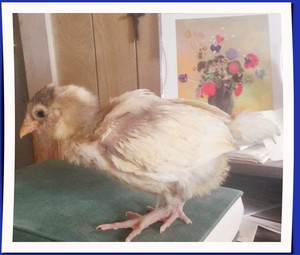16 Jul Sat 2016
The chantecler died
Yesterday, my last Chantecler, a partridge hen, died. She had not been laying in a while, since last summer, but we kept her around for winter: Chants are great winter birds and though the Almanack said it would not be nearly as cold as the past 2, having an extra hen to generate heat in a cold coop, does not hurt.
She was a great brood mother. Unfortunately, she had a black cap on her head, which I was told by the Club Founder, Mike Gilbert, was not APA accepted. Pity, I liked that look at lot; I think that was a mistake. Still that was the case, so what can you do; she never went a show room but stayed on the farm, and was happy.
This year she was in her glory. She would go around cluck and worry about her chicks, all buff Ameraucanas, and look after the 25 counting heads and making sure they were all there. Some of them got culled early on because they had crooked or scissor beaks. When I killed them, she would scream and look for them and then huddle the survivors under her broad wings for protection.
I have had camera problems lately, but that's a poor excuse honestly. I have no pictures of her, and I was sorry to see her dead, in her tractor home alone. I don't know what killed her, but last week others of her age, she was three, died as well. Pity they died rather young; some people I know have hens forever, almost literally, mine basically from hatcheries have not lasted so long. Makes it rough to build up stock.
The page attached is from the Livestock Conservancy Book, which is somewhat better than their website but not much. The partridge Chanteclers unlike the whites, are from Alberta. They are very broody.
She was a great brood mother. Unfortunately, she had a black cap on her head, which I was told by the Club Founder, Mike Gilbert, was not APA accepted. Pity, I liked that look at lot; I think that was a mistake. Still that was the case, so what can you do; she never went a show room but stayed on the farm, and was happy.
This year she was in her glory. She would go around cluck and worry about her chicks, all buff Ameraucanas, and look after the 25 counting heads and making sure they were all there. Some of them got culled early on because they had crooked or scissor beaks. When I killed them, she would scream and look for them and then huddle the survivors under her broad wings for protection.
 |
| Cornish partridge female. My chantecler female with the black head was similar but the eyes were not as prominent and of course the comb was a cushion. |
The page attached is from the Livestock Conservancy Book, which is somewhat better than their website but not much. The partridge Chanteclers unlike the whites, are from Alberta. They are very broody.

Suki
07:55 PM EDT
Comments:

